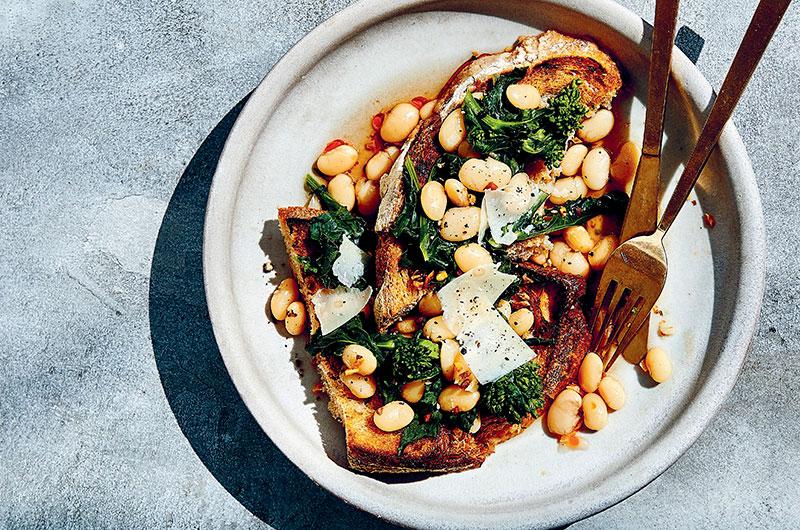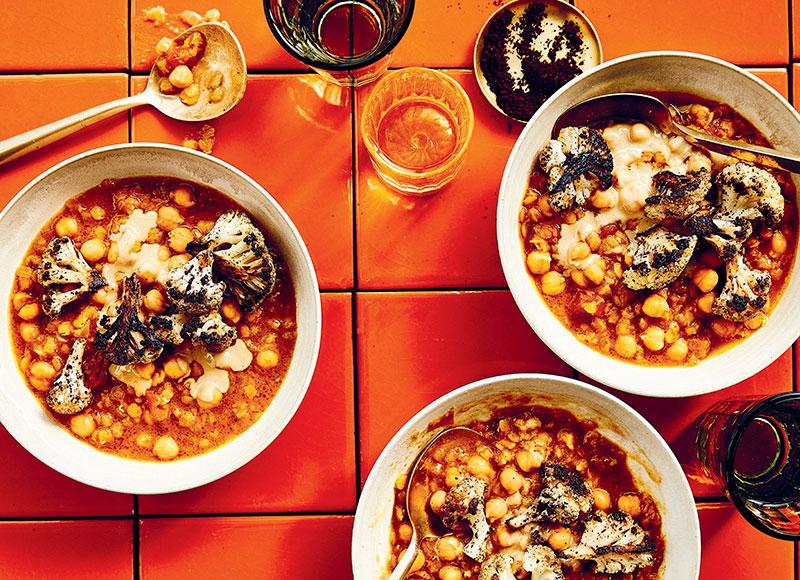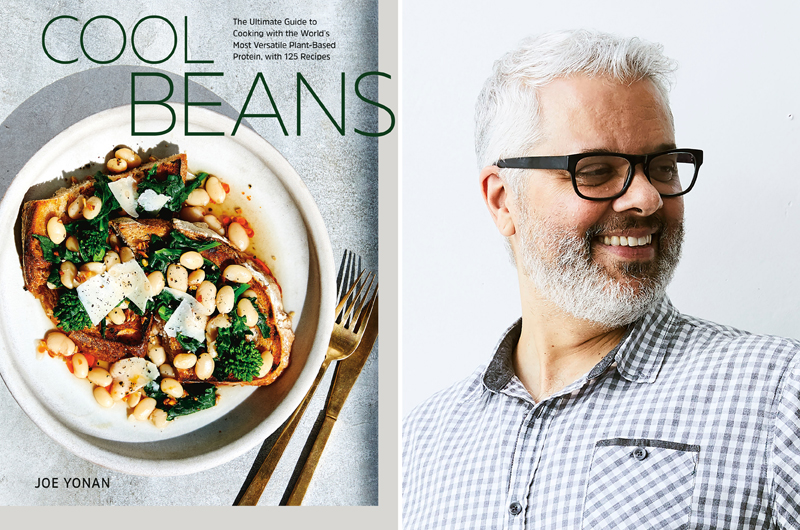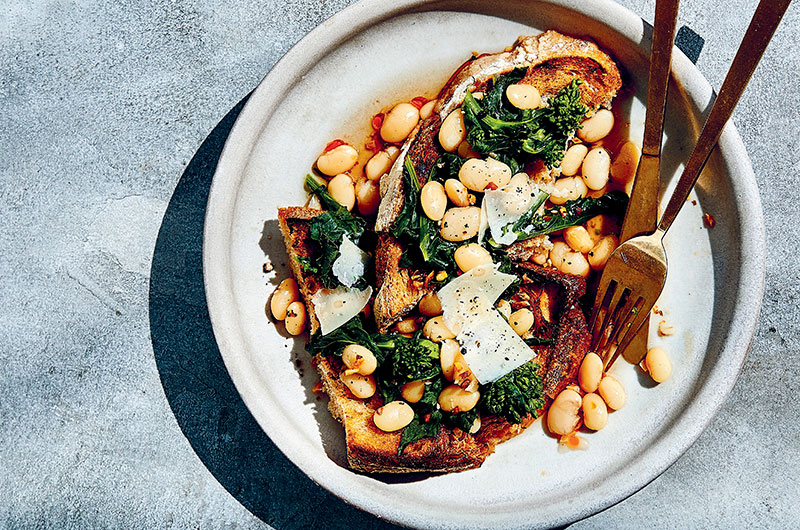In The Cook and The Book, an ongoing series brought to you by Martha's Vineyard magazine's Cook the Vineyard, we put the spotlight on cookbook authors we love by taking a look at their latest book.
THE COOK
Joe Yonan
The food and dining editor of The Washington Post, Joe Yonan is both journalist and cook. Since Joe arrived at The Post (via The Boston Globe, where he was a food writer and Travel section editor), the food section has won top awards from the James Beard Foundation, the International Association of Culinary Professionals, and the Association of Food Journalists. He’s written three cookbooks and edited America the Great Cookbook. A vegetarian for many years, Joe also spent a year living at his sister’s homestead in Maine to learn more about living off the land and eating locally. He writes the “Weeknight Vegetarian” column for The Post, and for five years he wrote the “Cooking for One” column. His work has been featured multiple times in the Best American Food Writing anthology.
When Joe decides to learn more about a certain area of food, look out – he will do his research as only a journalist and an enthusiastic cook (and eater) can.
With Cool Beans, his latest book, he dives deep into the subject of the world’s most earth-friendly protein and blends his home-cook sensibility with his exposure to Washington’s best chefs into a vibrant, fascinating and user-friendly cookbook that’s as delicious as it is useful.
As Yotam Ottolenghi said upon reading Cool Beans, “Creativity, passion, and knowledge are visible in every dish.”
Be sure to read our interview with Joe, where he talks more about his mission to make beans “sexy” and previews some of the techniques, solutions and flavors you’ll find in Cool Beans.
Follow Joe on Instagram @joeyonan
Visit Joe’s website
Follow Joe on Facebook
THE BOOK
Cool Beans: The Ultimate Guide to Cooking with the World’s Most Versatile Plant-Based Protein, with 125 Recipes
Ten Speed Press, February, 2020
Hardcover $30
240 pp.
A Few Things We Love about Cool Beans
- The writing! Starting with the introduction, Joe’s knowledgeable but friendly voice takes us on a seductive culinary tour of bean stardom, from a spectacular bean soup in Mexico City to the heirloom beans of Napa’s Rancho Gordo. Throughout the book, headnotes and tips are informative and digestible.
- The answers to all our questions: To soak or not soak? Pressure cooker or stovetop? What about canned? What if I don’t have that bean? Plus: timetables.
- The recipes are a unique blend of Joe’s home-cook sensibility and his exposure to so many amazing chefs in Washington, as well as his familiarity with the work of many cookbook authors and food writers. So methods are sensible but flavor combinations are exciting. Just look at the list of our favorites below. Ridiculously delicious.
- A bean glossary — yay!
- Aubrie Pick’s photos are rich, warm, and alluring.
THE RECIPES
On Cook the Vineyard:

• Garlicky Great Northern Beans and Broccoli Raab over Toast
• Red Lentil Ful with Sumac-Roasted Cauliflower

Other recipes in the book that we love:
• Homesteader’s New England Baked Beans
• Ecuadorian Lupini Bean Ceviche
• Little Sesame’s Creamy, Fluffy Hummus
• Red Gem Salad with Green Curry Goddess and Crispy Lentils
• Pinto Bean Tortilla Salad
• Cuban-Style Orange-Scented Black Beans
• Kabocha Squash, Chickpea and Lemongrass Stew
• Black Bean-Chipotle Falafel Burgers
• Enfrijoladas with Sweet Potatoes and Caramelized Onions
• Paella with Chickpeas, Green Beans, and Shishito Peppers
THE ORGANIZATION
Chapters:
1 Dips & Snacks
2 Salads
3 Soups, Stews & Soupy Sides
4 Burgers, Sandwiches, Wraps, Tacos & A Pizza
5 Casseroles, Pasta, Rice & Hearty Main Courses
6 Drinks & Desserts
7 Condiments & Other Pantry Recipes
THE SOURCES
Whenever possible, it's always a good idea to purchase your cookbooks through an independent bookstore, like our local Bunch of Grapes bookstore in Vineyard Haven. Independent bookstores can always order a book for you if they don’t currently have it. If you need to find out where your nearest independent bookstore is, check out IndieBound.org’s Bookstore Finder.
Cool Beans is also available online from:
OTHER BOOKS BY JOE
Eat Your Vegetables: Bold Recipes for the Single Cook
Serve Yourself: Nightly Adventures in Cooking for One
America The Great Cookbook (Editor)
The Q & A
Cook the Vineyard talks beans with Joe Yonan, February 2020
CTV: Cool Beans is such a great repertoire-expander for all of us wanting to cook more plant-based meals in general, and more beans in particular. What do you think is the most valuable aspect of the book, or, in other words, what was your main mission?
Joe: My main mission is to make everyone fall in love with beans the way I have, to realize that they are indeed the answer to eating satisfying plant-based meals, but also that they’re just plain delicious no matter what your dietary choices are. I want to make beans sexy!
CTV: One of the things that makes this book so rich is the combination of your own personal relationship with beans — your vegetarianism, your year on a Maine homestead, your childhood in west Texas — with that insight you bring from being the editor of a major urban newspaper food section in a city with a terribly rich diversity of cuisines. Bringing chef’s recipes into the mix with your own – and in many cases seeing how you adapted them to home cooking – is so valuable. Was that difficult to pull off? How did you decide to reach so deeply into recipes from a diverse collection of influences?
Joe: Honestly, I started reaching out from a sense of panic – you know, that how-am-I-going-to-come-up-with-125-recipes feeling! I had a lot of bean recipes in my personal repertoire, but I wanted to make sure to reflect the way beans are cooked in modern kitchens all over the world. And yes, I’m lucky to know so many talented people in the food world, so I just started calling them up and asking them how they like to use beans, and asked them to connect me to other bean lovers. It didn’t take long before I started to think, “How am I going to limit this to just 125 recipes?”
In many cases, I’ve taken shameless liberties with the recipes I was offered, because I usually can’t help it once I start cooking something – I make it my own. But there were plenty of cases where I learned such great techniques that I never would have thought of. And with some people, it wasn’t so much a recipe as a series of thoughts and ideas – we just brainstormed, and that juiced my creativity.
CTV: We’re intrigued by your suggestion to cook beans ahead and keep them in the cooking liquid, either in the fridge or in the freezer. We’d like to get in the habit of doing this to use in weeknight meals. Any tips for us? How long do they keep in the fridge? Can you explain the advantages of this over using a can of beans?
Joe: I’ve been doing this for years, and it makes such a difference in my weeknight cooking. You’re pouring so much flavor into the beans when you cook them well from dried, and then you’ve got this ingredient that can make, say, a quick salad or tacos or beans and greens on toast taste like it took you hours.
Some tips: Season the beans fairly neutrally (without powerful spices, for instance) to retain some versatility. Use quart-sized Mason jars, my favorite. And buy a couple of canning jar funnels if you don’t have them already – they make it so easy to ladle the beans (or anything else, really) from pot to jars.
I find a pound of beans fills up two jars each about two-thirds of the way full, so you’ve got room for another couple cups of cooking liquid in each. If you have more liquid than can fit, please save it – it makes an excellent soup or soup base! The beans will keep in the fridge for about a week. In the freezer, I like to use zip-top bags because they store flat and therefore the beans defrost more quickly, but you can also use freezer jars.
The advantage of this over canned beans – which I do think are an excellent convenience product – is really in that cooking liquid. There’s so much flavor in it, and it’s nothing like the liquid in the can of beans, which I usually get rid of. (With the exception of the liquid in a can of chickpeas, which of course is magic.)
CTV: In your introduction, you site studies that have shown that populations around the world with highest longevity rates have something in common – eating beans. And you mention that beans are both protein and vegetable. How important are beans to a healthful, plant-based diet? Are they the number one source of protein in a vegetarian diet? Safe to eat every day?
Joe: Studies have shown that meals based on beans are actually more satisfying than those based on meat, so, yes, I think they’re crucial to a healthful, plant-based diet. Frankly, I think they’re crucial to any diet! I love tofu and tempeh, other good protein sources in a plant-based diet, but beans are my number-one, indeed, because I find their diversity and versatility to be unparalleled. And yes, safe to eat every day! For those who find they get too much gas when they eat beans, trying to work small amounts into more and more of their meals can help their body adjust. And of course there are ways to cook them – using kombu, for instance – that can help cut down on the flatulent effects.
CTV: How important is the source of the beans we buy? One of the fascinating things we learn about beans in this book is how many wonderful varieties there are that most of us have never heard of or cooked with. Should we reach out and mail order a few new varieties to try?
Joe: It’s very important. It’s often impossible to know how old supermarket beans are, for instance, and that can affect how long it takes to cook them. But yes, the other reason is that at a company like Rancho Gordo you can find heirloom varieties that will knock your socks off: Royal Corona, Rio Zape, Marcella and more. So I encourage everybody to try them – they will inspire you in the kitchen! I recommend other companies, too: Camellia, based in Louisiana, for Southern favorites like red kidney beans, black-eyed peas and other field peas; I fell in love with their Lady Cream Pea! From Gustiamo, I've bought such delights as cicerchie, or wild chickpea. And Timeless Natural Food in Minnesota sells outstanding lentils. That’s just to start! It's also of course worth keeping an eye out for farmers who may be selling freshly ground (or recently dried) beans in your local farmers’ market. And make sure to ask them their favorite ways to cook what they grow.
CTV: It’s hard to play favorites in a cookbook, but do you have any absolute favorite techniques or favorite recipes in the book? Or, if all else fails and you need a quick bean dish on a weeknight, what do you make?
Joe: I learned so many techniques! One of my favorites is from DC chef Christian Irabien, who adds unpeeled onion, unpeeled garlic, bay leaf and dried avocado leaf when he cooks black beans, then he leaves all that in when he purees the beans with some of the inky black liquid in a high-powered blender. It creates such layers of flavor! Then of course, you can use that puree in so many ways – he dubbed it Mexico’s mother sauce, or salsa madre, which I just love. Now, when I want a quick bean dish on a weeknight, my go-to are tacos and tostadas. I usually always have another cooked vegetable – say, sweet potato, greens, mushrooms – in my fridge, along with pickled onions, sauerkraut, kimchi. Combine those with beans, salsa and pumpkin seeds (maybe avocado, of course), and you’ve got a lightning quick meal that you’ll be so happy to eat.








